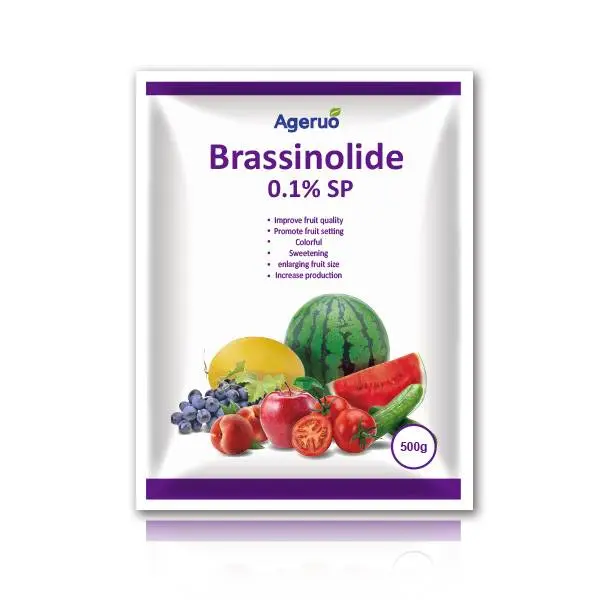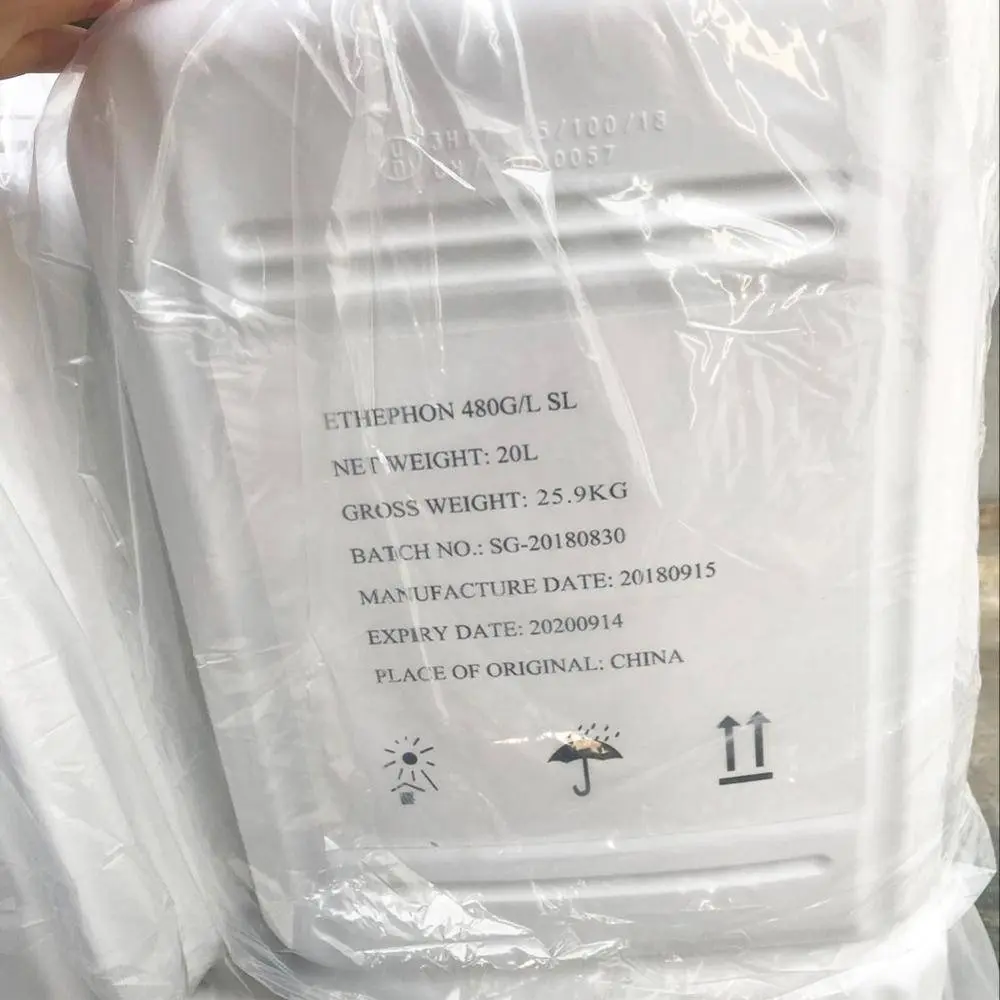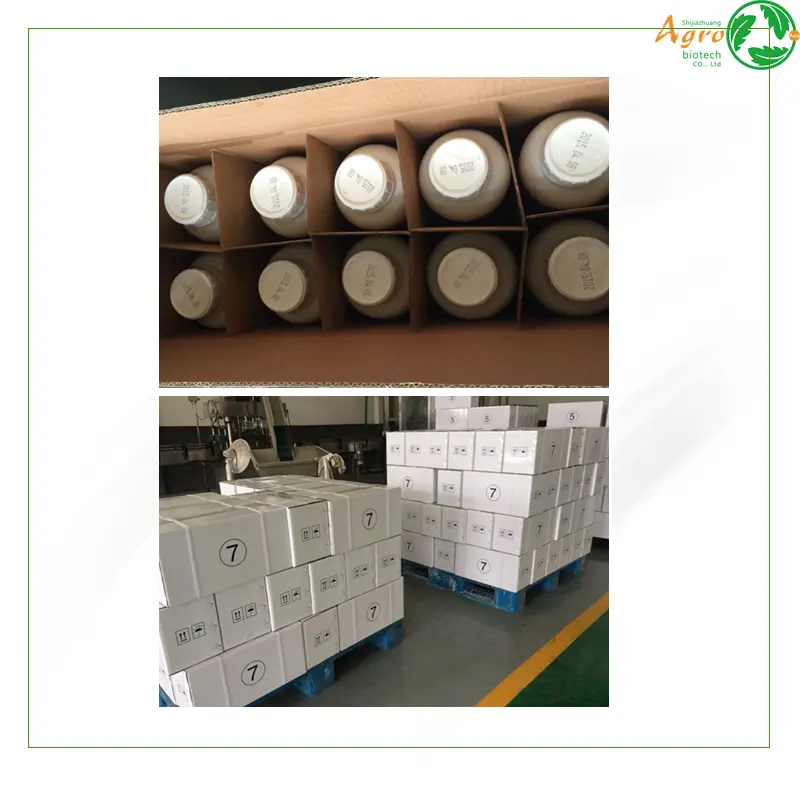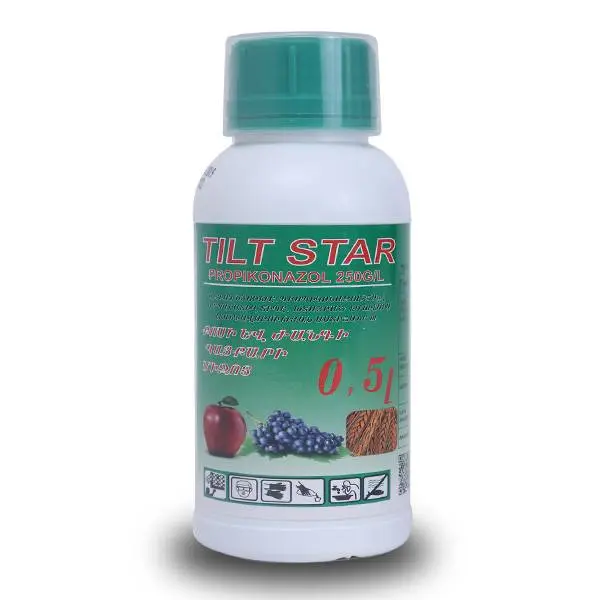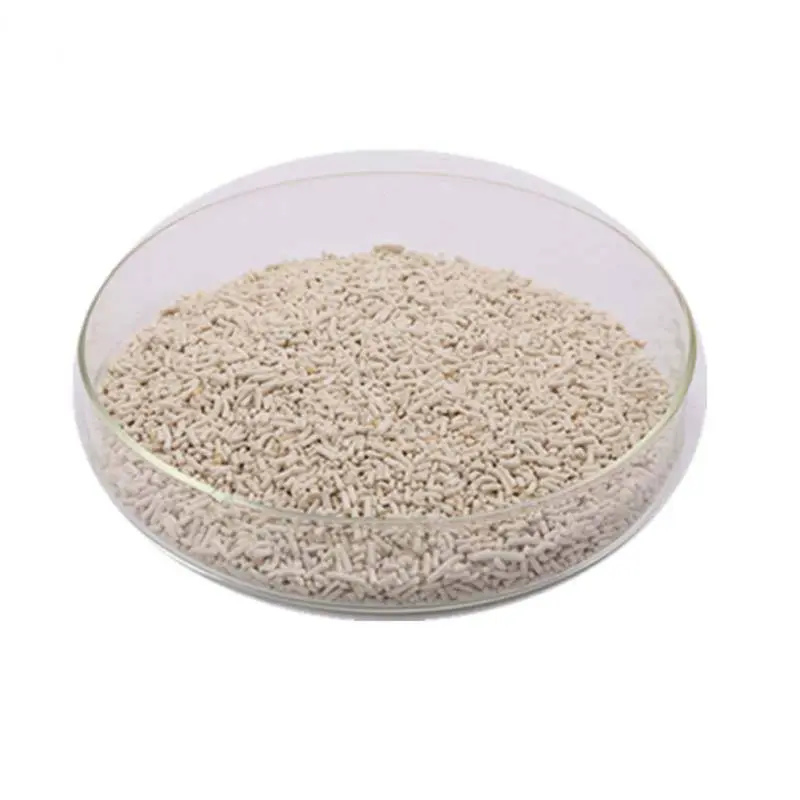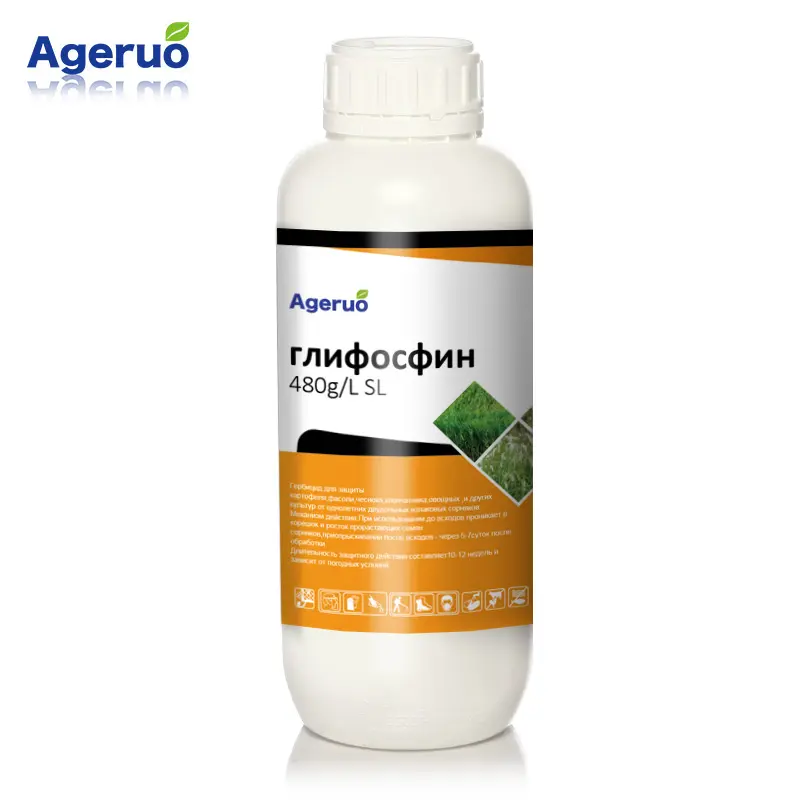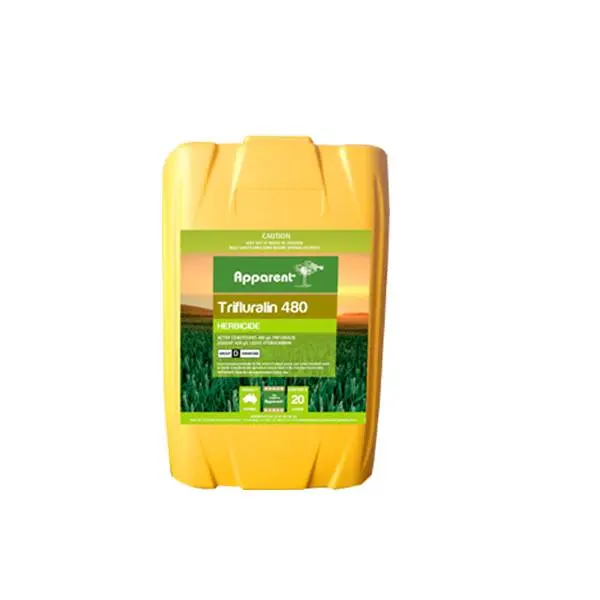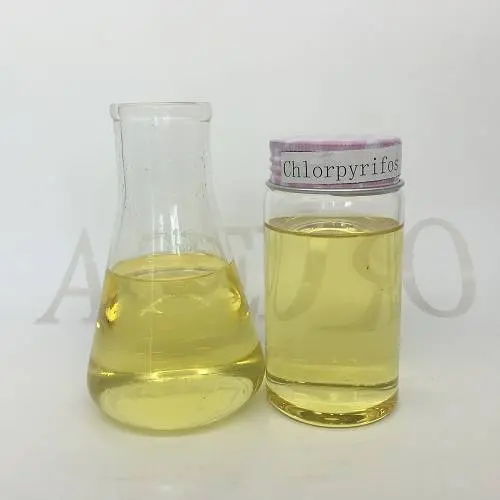- Fungicide
-
Herbicide
- 2,4-D Amine
- Atrazine
- Carfentrazone-ethyl
- Clethodim
- Cyhalofop-butyl
- Diquat
- Diuron
- Glufosinate-ammonium
- Glyphosate
- Haloxyfop-r-methyl
- Linuron
- Metribuzin
- Nicosulfuron
- Oxyfluorfen
- Paraquat
- Pendimethalin
- Penoxsulam
- pinoxaden
- Quinclorac
- Quizalofop-p-ethyl
- Rimsulfuron
- Sodium Nitrophenolate
- Thifensulfuron Methyl
- Tribenuron-methyl
- Trifloxysulfuron
- Trifluralin
-
Insecticide
- Abamectin
- Acetamiprid
- Alpha cypermethrin
- Amitraz
- Bifenazate
- Bifenthrin
- Cartap
- Chlorfenapyr
- Chlorpyrifos
- Cyromazine
- Deltamethrin
- Diflubenzuron
- Dimethoate
- Dinotefuran
- Emamectin benzoate
- Fenthion
- Fipronil
- Flonicamid
- Imidacloprid
- Indoxacarb
- Lambda cyhalothrin
- Lufenuron
- Malathion
- Matrine
- Metaldehyde
- Methomyl
- Profenofos
- Pyridaben
- Spirodiclofen
- Thiamethoxam
- Thiocyclam
- Plant Growth Regulator
- Complex Formula
- Seed-Dressing Agent
- Fertilizer additive
- New Products
Chlorpyrifos 50% EC High Quality Agochemicals Pesticides Insecticides
product detail
What Is Chlorpyrifos and Why It Delivers Powerful Pest Control
Chlorpyrifos is an organophosphate insecticide with a multi-mode action: it works by contact, ingestion, and fumigation, making it highly effective against both above-ground and soil-dwelling insect pests. As a non-systemic insecticide, it stays on the surface of plant parts and soil to create a strong protective barrier, ensuring immediate and lasting control.
1. Triple Action for Fast and Extended Control
-
Contact Action: Kills insects upon direct exposure to the spray
-
Stomach Poison: Targets pests feeding on treated plant surfaces
-
Fumigation Effect: Provides gaseous action in enclosed plant areas or soil
This combination ensures rapid knockdown and residual protection, even in challenging pest outbreaks.
2. Broad-Spectrum Activity
Chlorpyrifos controls a wide variety of agricultural pests, including:
-
Lepidopteran larvae: Rice stem borers, armyworms, leaf rollers
-
Homopterans: Aphids, whiteflies, planthoppers
-
Coleopterans: Beetles, rootworms
-
Soil pests: Cutworms, wireworms, grubs, termites
Its versatility makes it ideal for use across cereal crops, vegetables, oilseeds, and fruit trees.
3. High Compatibility and Tank-Mix Flexibility
-
Compatible with most insecticides, fungicides, and foliar fertilizers
-
Shows synergistic effects when mixed with pyrethroids like cypermethrin
-
Often included in resistance management rotations to prevent pest adaptation
4. Reliable Field Performance in Diverse Conditions
Chlorpyrifos 50% EC performs well under:
-
Tropical and subtropical climates
-
High pest-pressure cropping systems
-
Intensive agriculture with minimal crop phytotoxicity
Its proven effectiveness has made it a mainstay in integrated pest control programs across Asia, Africa, South America, and the Middle East.
Flexible Formulations and Reliable Usage Guidelines
We supply Chlorpyrifos in a variety of formulations, with 50% EC (Emulsifiable Concentrate) being the most popular for broad-field agricultural use. Our formulations are manufactured under ISO9001-certified processes and are stable, easy to dilute, and fast-acting in the field.
1. Available Formulations
-
Chlorpyrifos 50% EC – Standard, field-proven insecticide formulation
-
Other options upon request:
-
Chlorpyrifos GR (granules) – For soil application
-
Chlorpyrifos ME (microemulsion) – Low-odor, safer handling
-
All formulations support:
-
Custom packaging sizes (from 100ml to 200L)
-
Multilingual labels
-
Compatibility with tank-mix programs
2. Recommended Application Rates
| Crop | Target Pests | Dose (per ha) | Method |
|---|---|---|---|
| Rice | Stem borers, leafrollers | 1000–1500 ml/ha | Foliar spray |
| Wheat | Armyworms, aphids | 900–1200 ml/ha | Foliar spray |
| Cotton | Cotton bollworm, aphids, red spider | 1000–1250 ml/ha | Foliar spray |
| Vegetables | Thrips, whiteflies, soil grubs | 800–1200 ml/ha | Foliar or soil spray |
| Fruit trees | Leafhoppers, beetles | 1000–1500 ml/ha | Cover spray |
Dilute with 200–400 L water per hectare, depending on canopy density and pest pressure.
3. Application Tips
-
Spray during cooler hours: early morning or late afternoon
-
Avoid application before rain or during high winds
-
Use protective equipment and observe re-entry intervals (REI ≥ 24 hrs)
-
Avoid spraying sensitive crops like tobacco, tomato leaves, and melons
Chlorpyrifos can be applied up to 2–3 times per growing season, depending on label restrictions and local regulations.
Target Crops and Pest Control Spectrum – Versatile Across Agricultural Systems
Chlorpyrifos 50% EC is valued for its ability to control a wide range of both above-ground and soil-dwelling insect pests, offering comprehensive protection in cereal crops, industrial crops, vegetables, fruit trees, and ornamentals.
1. Suitable Crops
Chlorpyrifos is effective in the protection of:
-
Cereals:
-
Rice
-
Wheat
-
Corn
-
-
Industrial crops:
-
Cotton
-
Sugarcane
-
Tobacco (use with caution)
-
-
Vegetables:
-
Tomato (avoid direct leaf spraying)
-
Onion
-
Cabbage
-
Eggplant
-
Root vegetables (carrot, beet)
-
-
Orchard and fruit crops:
-
Citrus
-
Mango
-
Apple
-
Grape
-
-
Flowers and ornamentals
(except sensitive varieties like lettuce)
2. Major Pests Controlled
| Pest Category | Common Species Controlled | Remarks |
|---|---|---|
| Lepidopterans | Rice stem borer, armyworm, leaf roller, cotton bollworm | Key use for rice, cotton, and vegetables |
| Homopterans | Aphids, whiteflies, leafhoppers | Fast knockdown on sucking insects |
| Coleopterans | Beetles, corn rootworms | Can be used with root drench or foliar |
| Soil insects | Cutworms, wireworms, root grubs, termites | Root irrigation or granular formulation |
| Mites | Red spider mite (limited action, often combined with acaricide) | Combine with miticides if needed |
3. Notable Strength – Underground Pest Control
Chlorpyrifos can be applied as a root drench or soil spray, offering:
-
Deep penetration and long residual in the rhizosphere
-
More than 30 days of efficacy against grubs, cutworms, and borers
-
Suitable for nursery and seedling protection
With such broad pest coverage, Chlorpyrifos remains a go-to solution for farmers in mixed cropping systems, multi-pest environments, and intensive production zones, giving distributors high-volume sales potential across different markets.
How Chlorpyrifos Works – Triple-Action Nerve Poison for Reliable Pest Knockdown
Chlorpyrifos is a non-systemic organophosphate insecticide that primarily functions by inhibiting acetylcholinesterase (AChE) in target pests. This inhibition leads to continuous nerve signal transmission, resulting in paralysis and death of the insect.
1. Acetylcholinesterase Inhibition – Fast Nerve System Disruption
-
Chlorpyrifos binds irreversibly to AChE, an enzyme essential for nerve signal regulation.
-
This causes excess acetylcholine to accumulate in the synaptic cleft.
-
Insects lose muscle coordination, suffer spasms, and die within hours.
This action ensures rapid knockdown, even for pests in dense canopies or hard-to-reach areas.
2. Multi-Mode Delivery – Contact, Stomach, and Fumigation
Chlorpyrifos is effective via three exposure routes:
-
Contact Poison: Kills insects upon physical contact with treated surfaces.
-
Stomach Poison: Enters the insect’s digestive system when it feeds on treated crops.
-
Fumigant Effect: Volatile activity creates toxic vapors in enclosed spaces (e.g., soil, plant canopy).
This makes Chlorpyrifos highly versatile, especially in multi-pest field conditions.
3. Non-Systemic Behavior – Surface-Level Action, Lower Residue Risk
-
Chlorpyrifos does not move inside the plant; it remains on the surface, providing a protective layer.
-
This reduces systemic residue risks and makes it suitable for crops with moderate residue requirements, especially when applied early.
4. Strategic Role in Resistance Management
-
Chlorpyrifos has a different mode of action from neonicotinoids, pyrethroids, and diamides.
-
Useful in rotation programs to combat resistance, especially for pests like:
-
Stem borers
-
Leafhoppers
-
Whiteflies
-
By alternating Chlorpyrifos with modern insecticides, growers can extend the lifespan of their pest control programs and delay resistance buildup.
Application Guidelines – Safe and Effective Use for Maximum Field Performance
Chlorpyrifos 50% EC is suitable for a variety of crops and pest scenarios. To ensure optimal efficacy while minimizing risk to crops, applicators, and the environment, follow these recommended application practices.
1. When to Apply
-
At early pest appearance or before pest populations build up
-
Ideal for preventive and curative spraying in pest-prone growth stages such as:
-
Tillering in rice
-
Pre-flowering in cotton
-
Early vegetative phase in vegetables
-
Repeat applications may be needed every 7–14 days, depending on infestation level and local conditions.
2. Dilution and Spray Volume
| Formulation | Standard Dilution | Water Volume per ha |
|---|---|---|
| Chlorpyrifos 50% EC | 800–1500 ml per hectare | 200–500 L/ha |
| Soil/root zone use | 1000–2000 ml/ha (targeted use) | With root irrigation or drench |
Always agitate the solution thoroughly during mixing and spraying to ensure uniform application.
3. Application Method
-
Foliar spray:
-
Use backpack or tractor-mounted sprayers with fine nozzles for even canopy coverage
-
Apply during early morning or late afternoon to avoid evaporation and drift
-
-
Soil treatment/root zone spray:
-
Apply diluted solution around plant bases to target underground pests (e.g., grubs, termites)
-
4. Re-Entry and Pre-Harvest Interval (PHI)
-
Re-entry Interval (REI): Minimum 24 hours after spraying
-
Pre-harvest Interval (PHI):
-
Rice/wheat: 14 days
-
Vegetables: 10–14 days
-
Fruits: 21 days (or as per local label)
-
5. Safety and Compatibility Notes
-
Do not apply during strong wind or when rain is expected within 2 hours
-
Avoid spraying sensitive crops like tobacco, tomato foliage, melons, and lettuce
-
Wear full PPE: gloves, goggles, mask, long sleeves
-
Do not mix with alkaline substances unless compatibility is confirmed
Properly applied, Chlorpyrifos offers robust, reliable protection with lasting residual effects, helping farmers minimize crop losses and reduce spray frequency.
Why Chlorpyrifos 50% EC Is a Top Seller – Proven Performance with Commercial Flexibility
Chlorpyrifos 50% EC remains one of the most widely used insecticides globally due to its broad-spectrum control, fast action, and affordable pricing. Combined with strong manufacturer support and regulatory readiness, it is a high-converting product for distributors across emerging and mature markets alike.
1. Triple-Action Efficacy for Multi-Pest Protection
-
Combines contact, ingestion, and fumigation activity
-
Targets both above-ground pests (aphids, caterpillars, hoppers) and soil insects (grubs, cutworms)
-
Reduces crop damage quickly and visibly within hours of application
Growers trust it for immediate relief and season-long protection.
2. Proven Fit for Key Crops in Global Markets
-
Widely used in rice, cotton, vegetables, wheat, and fruit crops
-
Supports multi-crop programs with a single product
-
Especially effective in humid, tropical, and high-pressure pest zones
Its cross-crop utility makes it a high-rotation product in ag-retail and government distribution networks.
3. Excellent Value for Price-Sensitive Buyers
-
Cost-effective alternative to newer chemistry with comparable control
-
Low per-hectare application cost, suitable for developing markets and smallholders
-
Strong margins for agro-dealers and importers with bulk volume pricing
4. Strong OEM and Regulatory Support
-
Full private label services available (from bottle to drum packaging)
-
Multilingual label printing with custom safety symbols and branding
-
ICAMA, ISO9001, SGS, and GLP documents available for registrations
-
Proven on-time delivery performance with strict inventory management
Whether you need a ready-to-launch brand, a formulation base, or a bulk supply for repacking, Chlorpyrifos 50% EC offers technical reliability and business scalability.
Full-Service Packaging and OEM Customization – Ready for Your Brand and Market
At Ageruo-Biotech, we provide flexible packaging and private label solutions tailored to meet the needs of:
-
National distributors
-
Agro-retail chains
-
Government procurement programs
-
Pesticide brand owners
1. Liquid Packaging Options for Chlorpyrifos 50% EC
Retail Sizes (suitable for agro-shops and smallholders):
-
50ml, 100ml, 200ml, 250ml
-
500ml, 1L, 2L
-
Materials: HDPE, CO-EX, PET, FHDPE
-
Available with: measuring caps, shrink wrap, tamper-evident seals
Bulk Supply Sizes (ideal for commercial farms or national programs):
-
5L, 10L, 20L HDPE drums
-
200L iron or plastic drums
-
IBC tanks for consolidated container loading
All packaging is leak-proof, export-certified, and moisture/UV resistant.
2. Custom Labeling and Branding
We offer complete OEM/ODM services, including:
-
Custom logo and design layout
-
Multilingual label printing (EN, FR, AR, ES, RU, etc.)
-
Safety symbols and pictograms per FAO/WHO and GHS guidelines
-
Optional anti-counterfeit solutions:
-
Holograms
-
QR code traceability
-
Security seals
-
Our design team can assist you in preparing regulatory-compliant artwork for your country.
3. Export & Compliance Support
We ensure smooth cross-border logistics by providing:
-
COA, MSDS, SGS test reports
-
GLP toxicology reports for registration
-
Support for ICAMA-based registration or new dossier assembly
-
Fast shipping via FCL or LCL, with flexible mix-loading options
Whether you're launching a new brand or fulfilling long-term supply contracts, our packaging solutions are scalable, reliable, and customized to your strategy.
Safe Storage and Handling – Protecting People, Products, and the Environment
Chlorpyrifos is a highly effective but toxic organophosphate insecticide, and must be handled with strict safety precautions to ensure the health of users, protect non-target organisms, and comply with national pesticide regulations.
1. Storage Guidelines
-
Store in a cool, dry, and well-ventilated area away from:
-
Direct sunlight
-
Moisture and heat sources
-
Food, feed, and drinking water
-
-
Keep containers tightly sealed and upright
-
Recommended storage temperature: 5°C–30°C
-
Do not stack in a way that may damage packaging
Properly stored, Chlorpyrifos 50% EC remains stable for up to 2 years.
2. Personal Safety During Use
Always wear PPE (Personal Protective Equipment):
-
Nitrile or rubber gloves
-
Goggles or face shield
-
Long-sleeved clothing and chemical-resistant boots
-
Respirator if spraying in confined areas
Avoid:
-
Contact with skin or eyes
-
Inhaling spray mist
-
Eating, drinking, or smoking during handling
Wash exposed skin and equipment thoroughly after use.
3. First Aid Measures
| Exposure Type | Response |
|---|---|
| Skin Contact | Wash thoroughly with soap and water for at least 15 minutes |
| Eye Contact | Rinse immediately with clean water for 15–20 minutes; seek medical advice |
| Inhalation | Move to fresh air; keep airway clear; seek help if breathing difficulty arises |
| Ingestion | DO NOT induce vomiting; rinse mouth and consult a doctor immediately |
Always keep the product label and MSDS available for emergency responders.
4. Environmental Safety
-
Toxic to fish, aquatic organisms, and bees
-
Do not apply near water bodies, fish ponds, or apiaries
-
-
Avoid drift to neighboring crops, especially melons, tobacco, lettuce, and tomatoes
-
Dispose of containers and unused product through licensed hazardous waste facilities
-
Triple-rinse empty containers before disposal; do not reuse for other purposes
Responsible handling supports your brand’s long-term credibility and ensures environmental compliance.
Frequently Asked Questions – What Buyers and Distributors Need to Know
1. What is Chlorpyrifos 50% EC used for?
Chlorpyrifos 50% EC is a broad-spectrum insecticide used to control chewing and sucking pests in crops such as rice, wheat, cotton, corn, vegetables, and fruit trees. It also provides excellent control of soil-dwelling pests when applied through root irrigation or soil drenching.
2. What pests does it control?
Chlorpyrifos effectively controls:
-
Rice stem borers, leaf rollers, armyworms
-
Aphids, whiteflies, leafhoppers
-
Cotton bollworms, cutworms, grubs, and termites
-
Also effective against certain storage and seedling pests
3. How does it work?
It inhibits acetylcholinesterase (AChE), disrupting insect nerve function. This results in paralysis and death through contact, ingestion, and fumigation routes. It’s not systemic—Chlorpyrifos acts on the surface of plants and soil.
4. Is Chlorpyrifos safe for crops?
Yes. It has no phytotoxicity on most crops if applied as directed. However, use caution when applying to:
-
Tomato foliage
-
Melons
-
Tobacco
-
Lettuce
Avoid spraying on these crops unless label specifically permits.
5. What is the shelf life?
The shelf life is 2 years when stored in original sealed packaging under proper conditions (cool, dry, ventilated storage).
6. What packaging sizes do you offer?
We provide:
-
Retail: 50ml to 1L bottles
-
Commercial: 5L, 10L, 20L drums
-
Bulk: 200L drums, IBC tanks, and custom options
All packaging supports private labeling and multilingual printing.
7. Can you support OEM services?
Yes. We offer:
-
Full OEM/ODM service including label design and custom logo
-
Multilingual printing, anti-counterfeit options (QR, hologram)
-
Regulatory document support for registration and compliance
8. Do you help with registration?
Absolutely. We provide:
-
ICAMA support, COA, MSDS, TDS
-
GLP toxicology and residue data upon request
-
Assistance in dossier preparation and regulatory filing
9. How long is the pre-harvest interval (PHI)?
-
Vegetables: 10–14 days
-
Cereals (rice, wheat): 14 days
-
Fruits: up to 21 days, depending on crop and country
Always follow your local label or authority guidelines.
10. Is Chlorpyrifos export-restricted?
Regulations vary by country. We support:
-
Markets where Chlorpyrifos is still registered and approved
-
Buyers who require technical support for local approval
We do not export to countries with active bans unless for industrial or registered research use.

 POMAIS
POMAIS